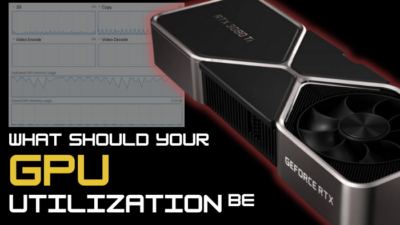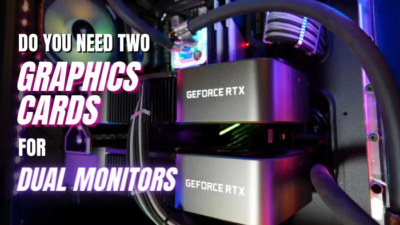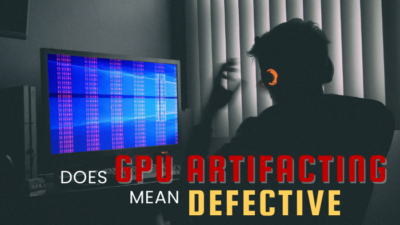Overclocking a Graphics card has become a preferred method to improve a computer’s overall system performance. Overclocking can improve performance and frame rates in video games and other programs.
However, there are some cases where overclocking is not possible, and users don’t know why.
So in this article, I will explain why users can not overclock their GPU and how to fix it.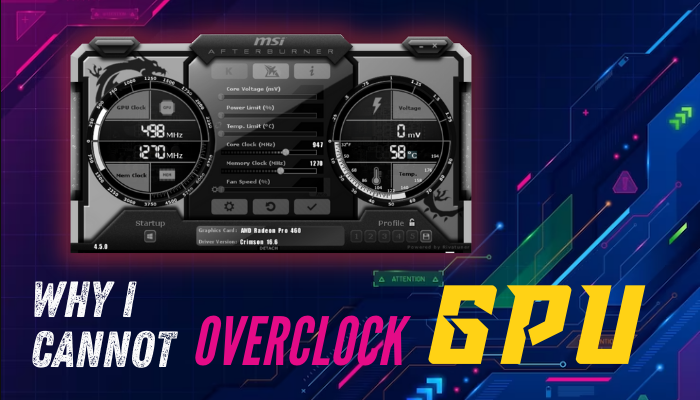
Let’s get started.
Why I Cannot Overclock My GPU?
The primary causes of GPU overclocking failure are incorrect BIOS settings in the computer, graphics cards that may not allow overclocking, and possibly physically locked GPUs. Some earlier or lower-end Graphics card models do not come with overclocking functionality.
A user may be unable to overclock their Graphics card for many causes. One of the most common causes is that their video card may not be capable of supporting overclocking.
Although overclocking is a feature that most modern GPUs have, some older or more affordable versions might not.
Another cause a user may be unable to boost their Graphics card is because their device’s BIOS options do not permit it. Because some motherboards do not allow overclocking, the option may not be available in the BIOS settings.
Another possibility is that the graphics device has a physical restriction preventing overclocking. Some video cards have a tangible switch used to deactivate overclocking, either to safeguard the card from harm or to keep a certain performance threshold.
Go through our epic guide on how much does Overclocking increase FPS?
What is GPU Overclocking?
Overclocking your GPU implies progressively raising the clock frequency of your graphics card to improve its functionality and performance. Graphics card boosting is a method used by enthusiasts and gamers to get the most out of their video cards.
Overclocking a Graphics card can be a difficult and potentially unsafe procedure. It entails modifying the GPU card’s clock frequency, power, and memory speed to improve productivity.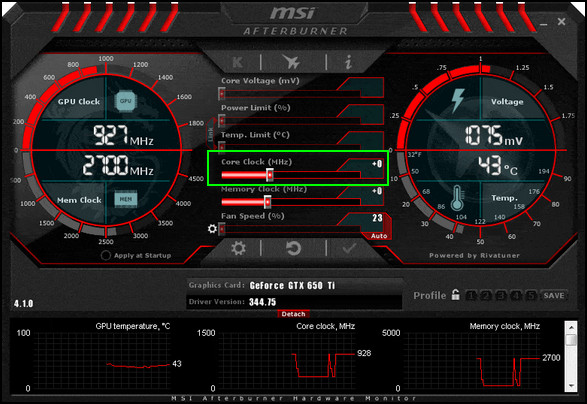
If done incorrectly, it may result in problems, malfunctions, and even harm to the video card.
To boost a Graphics card, the user must first ascertain the GPU card’s present clock frequency. After determining the current clock speed, the user can begin gradually increasing the clock frequency to test for stability.
Overclocking a GPU necessitates meticulous observation of the GPU’s temperatures and power.
Increased clock rates can cause the Graphics card to produce more heat, resulting in instability or even damage.
To minimize this danger, the user can increase the fan speed or add an aftermarket cooling device to maintain the Graphics card cool.
How to Overclock a GPU
Overclocking a GPU can be accomplished using either the graphics card’s specialized software or third-party software such as MSI Afterburner, EVGA Precision X, and ASUS GPU Tweak II. Users can overclock their Nvidia, AMD, and Intel GPUs using this overclock program.
To show overclocking, I’ll be using an NVIDIA RTX 3060ti GPU. Software for boosting and stress testing will be MSI Afterburner and MSI Kombustor, respectively. Just follow the instruction below to find it out.
Here are the steps for overclocking a GPU:
- Download MSI Afterburner and MSI Kombustor.
- Install both software to your computer.
- Open MSI Afterburner and MSI Kombustor at the same time.
- Increase the MSI Afterburner’s power, temp, core frequency, and memory clock gradually.
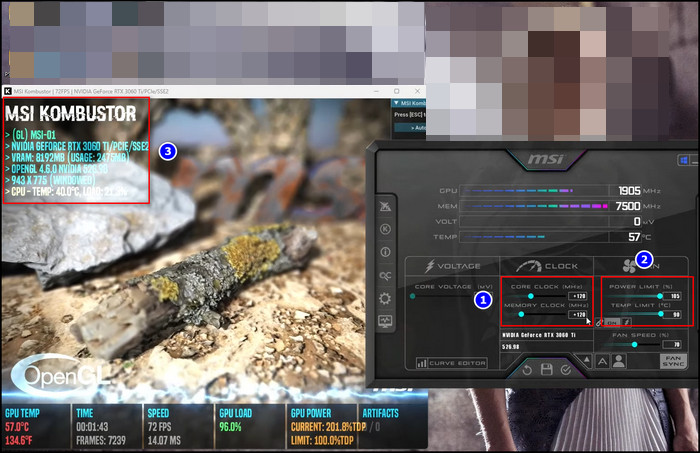
Note: In the meantime, keep an eye on the MSI Kombustor.
You must raise all the MSI afterburner settings until the MSI Kombustor crashes. If the MSI Kombustor runs stable with higher settings, it indicates the overclocking settings are ideal for your GPU.
How Much Should You Overclock a GPU
Try increasing the GPU memory speed by 15% or 55 to 150 MHz. Anything less than 15% should still provide stable functionality. However, the amount of overclocking depends on your GPU’s capability, as various GPUs have different overclocking capabilities.
The amount you should boost your Graphics card relies on many variables, including the type of video card you have, your computer’s cooling system, and the performance grade you desire.
The general guideline is to continually raise the clock frequency, monitoring the temperature and steadiness of your device after each change.
Most Graphics cards are designed to work within a particular temperature range, and surpassing this variety can result in hardware malfunction or damage. As a rule of thumb, maintain your GPU temperature below 85 degrees Celsius.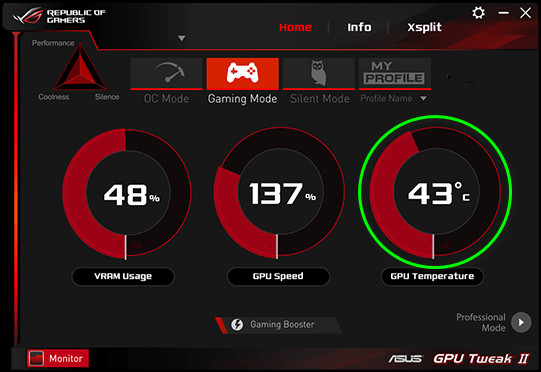
If you maintain the temperature below 85 degrees and your computer executes without any crash or stability issues, then that should be the range you should overclock your GPU.
Is Overclocking a GPU Bad?
Overclocking a GPU can result in substantial performance gains, but it also has some risks. The main threats of overclocking graphics cards are high temperatures, instability of the graphics card, and the system freezing without any sign or warning.
The most dangerous aspect of overclocking a Processor is that it can cause it to overheat. When the GPU gets too hot, it can harm the components, leading to a reduced lifetime for the Graphics card.
Instability is another concern connected with Graphics card overclocking. Overclocking can make the GPU unsteady, resulting in failures or system freezes.
This instability issue is especially troublesome when running demanding apps like video games or software for editing videos. If the Graphics card becomes unreliable, it can lead to lost information or malfunction, which can be a significant problem for some users.
FAQs
Does overclocking hurt GPU lifespan?
Overclocking a GPU is the process of raising its voltage to give it more power. Increasing the voltage produces more heat, which reduces the GPU’s lifespan.
Will GPU overclock itself?
Most modern GPUs have turbo boost technology, which increases and decreases a GPU’s clock speed based on program complexity.
What causes an unstable overclock?
Inadequate power would be the primary reason for an unstable overclock. So when a GPU requires more power but can not get it, it leads to unstable overclocking.
Conclusion
While overclocking a Graphics card can result in improved efficiency and quicker frame rates in games and other programs, it might not always be feasible or recommended.
Before trying to overclock, users must ensure that their Graphics card allows it, that their BIOS options support it, and that their Graphics card is not physically disabled.
If you have anything in mind, drop your comment in the section below.

